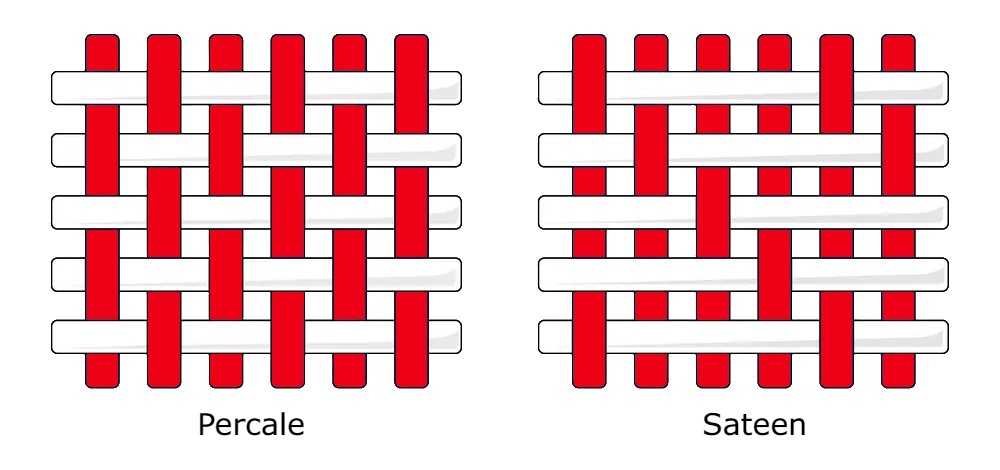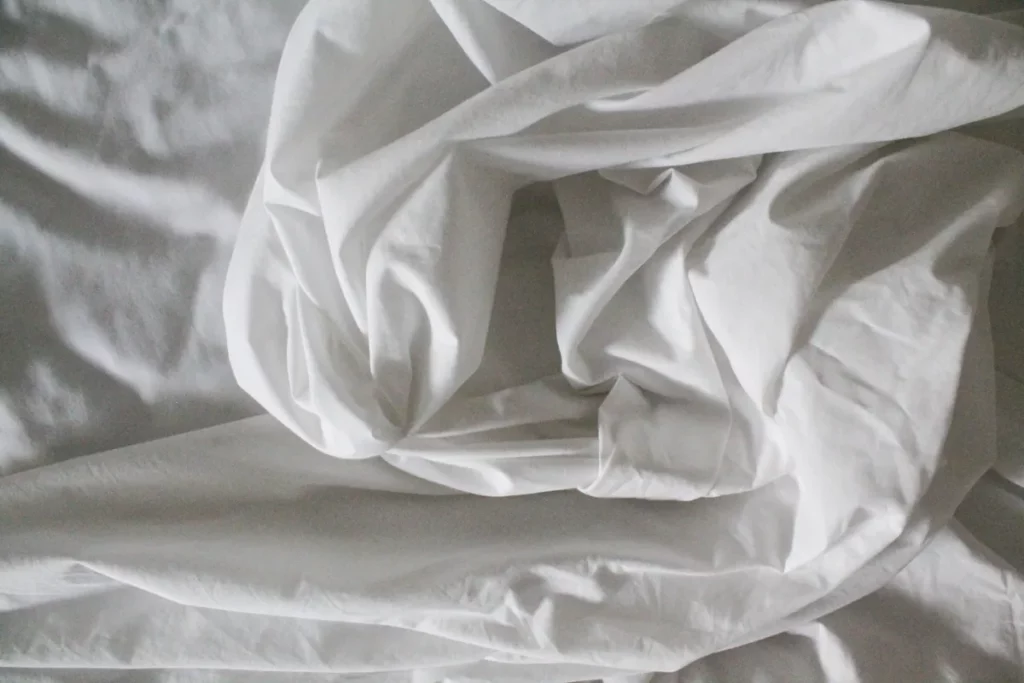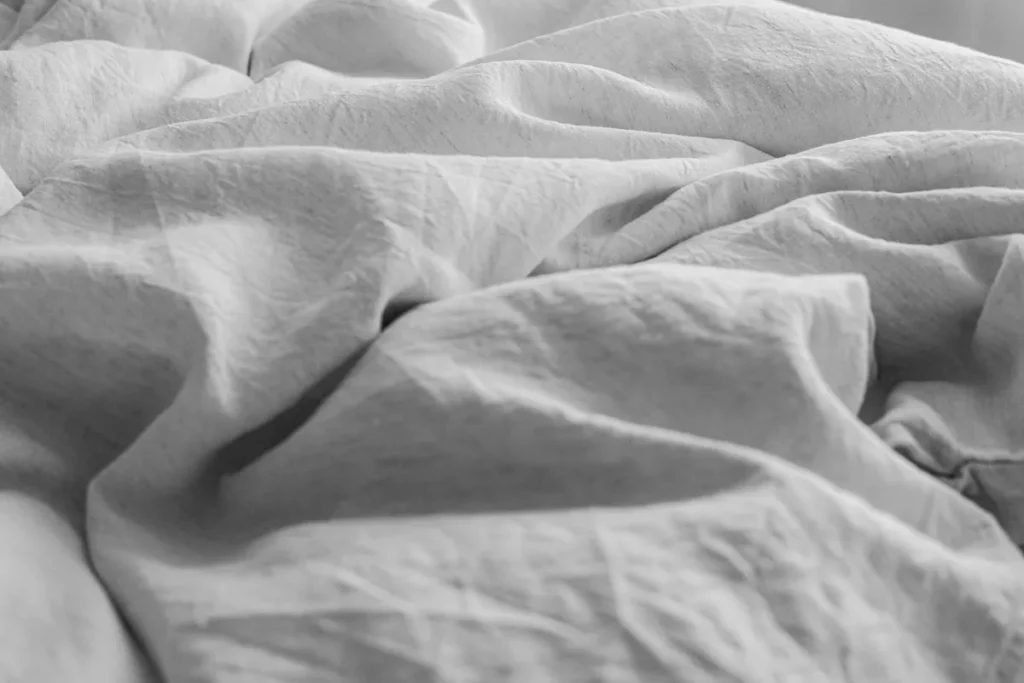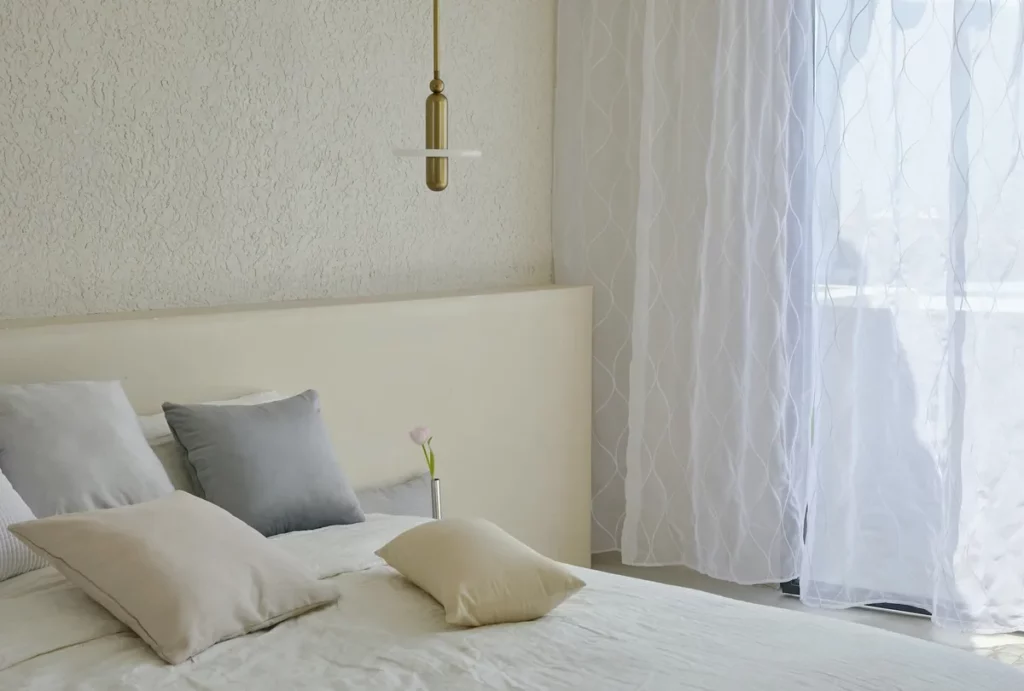Night sweats, or excessive sweating during sleep, can be a common issue that disrupts a good night’s rest. They can be caused by various factors such as menopause, medications, or certain medical conditions.
This discomfort can lead to frequent awakenings and a decrease in sleep quality. This article aims to guide you in finding the best cooling bed sheets to help combat night sweats and improve your sleep quality. By understanding the different types of sheets and their unique properties, you can make an informed decision that caters to your specific needs.
Table of Contents
The Science Behind Night Sweats and Cooling Bed Sheets
Our bodies naturally regulate temperature through sweating. However, at night, excessive sweating can lead to discomfort and interrupted sleep. This is where the role of bed sheets becomes crucial. The right bed sheets can help regulate body temperature and wick away moisture, providing a cooler and more comfortable sleep environment.
Understanding the science behind night sweats can help you make better choices when it comes to your bedding. When your body temperature rises, your sweat glands release moisture to cool you down. However, if your bed sheets don’t allow for adequate airflow or absorb this moisture, it can lead to a hot and uncomfortable sleeping environment.
Factors to Consider When Buying Cooling Bed Sheets
When shopping for cooling bed sheets, it’s essential to consider the material, thread count, and weave. These factors significantly influence the sheets’ cooling properties. For instance, materials like cotton and linen are known for their breathability, which allows for better airflow and can help keep you cool during the night.
Understanding Thread Count
Thread count refers to the number of threads per square inch of fabric. While a higher thread count often means a softer sheet, it doesn’t necessarily mean it will be cooler. In fact, sheets with a very high thread count can actually be less breathable because the tightly woven threads can trap heat. For those struggling with night sweats, a thread count between 200 and 400 is often recommended. This range provides a good balance of softness and breathability.
Weave Style

The weave of a fabric refers to how its threads are arranged and interlaced. Different weave styles can significantly affect a sheet’s feel, appearance, and breathability. For instance, percale weave is known for its crisp and cool feel, making it an excellent choice for hot sleepers. On the other hand, a sateen weave offers a silky smooth feel but tends to be less breathable than percale.
If you struggle with night sweats, make sure to check out our “Best Cooling Percale Sheets To Deal With Night Sweats” article.
Types of Cooling Sheets

Cotton Sheets
Cotton is a popular choice for bed sheets due to its breathability and durability. It allows air to circulate freely, preventing heat from getting trapped between your body and the bed sheet. However, not all cotton sheets are created equal. The quality can vary significantly depending on the type of cotton and the weave used.
Pros and Cons of Cotton Sheets
- Pros: Breathable, durable, affordable, and widely available.
- Cons: Quality can vary significantly, and lower-quality cotton sheets may not be as soft or durable.
Cotton sheets are a good choice for those dealing with night sweats due to their breathability and moisture-wicking properties.
How to Care for Cotton Sheets
Cotton sheets are generally easy to care for. They can be machine washed in warm water with a mild detergent and tumble dried on low heat. To prevent wrinkles, remove them from the dryer while they’re still slightly damp and immediately put them on your bed.

Linen Sheets
Linen sheets are known for their exceptional breathability and moisture-wicking properties, making them an excellent choice for hot sleepers. They tend to be more expensive than othertypes of sheets but are incredibly durable and can last for years if properly cared for.
Pros and Cons of Linen Sheets
- Pros: Highly breathable and excellent moisture-wicking properties.
- Cons: Can be expensive and may feel rougher than other types of sheets.
Linen sheets are ideal for those who sweat heavily at night due to their superior moisture-wicking properties.
How to Care for Linen Sheets
Linen sheets should be washed in cold or lukewarm water on a gentle cycle. Avoid using bleach or detergents with optical brighteners, as they can damage the fibers. Tumble dry on low heat or line dry, and remove while still slightly damp to prevent wrinkles.

Bamboo Sheets
Bamboo sheets are praised for their softness and cooling properties. They are naturally hypoallergenic and can wick moisture away from the body, helping to regulate body temperature throughout the night. However, they can be a bit pricey compared to other materials.
Pros and Cons of Bamboo Sheets
- Pros: Soft, cooling, and hypoallergenic.
- Cons: Can be expensive and may require more specific care to maintain their softness.
Bamboo sheets are a great choice for those with sensitive skin or allergies, in addition to their cooling properties.
How to Care for Bamboo Sheets
Bamboo sheets should be washed in cold water on a gentle cycle. Avoid using bleach or fabric softeners, as they can break down the fibers. Tumble dry on low heat or line dry to preserve the sheets’ softness and durability.

Tencel Sheets
Tencel is a type of fiber made from the wood pulp of trees. It’s known for being exceptionally soft, breathable, and moisture-wicking. Tencel sheets can help keep you cool and dry throughout the night, making them a great option for those dealing with night sweats.
Pros and Cons of Tencel Sheets
- Pros: Soft, breathable, and excellent moisture-wicking properties.
- Cons: Can be more expensive than other types of sheets and may require specific care to maintain their condition.
Tencel sheets are an excellent choice for those who value sustainability and natural materials, in addition to their cooling benefits.
How to Care for Tencel Sheets
Tencel sheets can be machine washed in cold or lukewarm water on a gentle cycle. Avoid using bleach or fabric softeners, as they can damage the fibers. Tumble dry on low heat or line dry, and remove while still slightly damp to prevent wrinkles.

Microfiber and Percale Sheets
Microfiber sheets, made from finely woven synthetic fibers, are typically affordable and resistant to wrinkles and fading. However, they may not be as breathable as other options. On the other hand, percale sheets, typically made from cotton, are known for their crisp and cool feel, making them a favorite among hot sleepers.
Pros and Cons of Microfiber and Percale Sheets
- Microfiber Pros: Affordable, wrinkle-resistant, and fade-resistant.
- Microfiber Cons: May not be as breathable as other materials.
- Percale Pros: Crisp and cool feel, durable, and breathable.
- Percale Cons: Can feel too crisp for some, and lower-quality percale sheets may not be as durable.
Microfiber sheets are a good choice for those on a budget, while percale sheets are ideal for those who prefer a crisp, cool feel.
How to Care for Microfiber and Percale Sheets
Both microfiber and percale sheets can be machine washed in warm water and tumble dried on low heat. To prevent wrinkles, remove them from the dryer while they’re still slightly damp and immediately put them on your bed.
Revitalizing Your Sleep With Other Cooling Products
Maintaining a cool, comforting environment during sleep is essential, especially if you’re grappling with night sweats. Here are a few game-changing products that can contribute to a more refreshing sleep experience, each contributing a unique aspect to your nighttime comfort:
Cooling Mattress
For a comprehensive solution, cooling mattresses are designed to enhance airflow and dissipate heat, thanks to their specialized materials and construction. Built with technology that actively cools down the mattress surface, they’re the ultimate investment for a refreshing night’s sleep.
Cooling Mattress Toppers
A cooling mattress topper is more than just a layer of comfort—it’s an innovative tool in managing body temperature. By incorporating temperature-regulating materials, these toppers can significantly reduce the heat retained during sleep, offering a less intrusive solution than changing your entire mattress.
Cooling Pillows
Cooling pillows, much like their mattress counterparts, are engineered with temperature-regulating materials—think gel-infused memory foam and breathable fabrics. Some come with removable, washable covers made from cooling fabrics, further enhancing your cool, night-long comfort.
Cooling Pajamas
Redefine your night-time routine with cooling pajamas. Made from breathable, moisture-wicking materials, these pajamas regulate your body temperature, providing a layer of comfort that extends beyond your bedding. If night sweats are a concern, these innovative garments are a great solution.
Cooling Comforters
The right comforter can turn your sleep from stuffy to serene. Cooling comforters, crafted from lightweight, breathable fabrics, offer a blissful balance between comfort and temperature management. They effectively disperse heat and, like other cooling sleep products, feature moisture-wicking properties to help keep you dry.
Each of these products offers a unique approach to tackling heat build-up during sleep, transforming your bed into an oasis of cool comfort. Together, they create an environment conducive to a full, undisturbed night’s rest.
Frequently Asked Questions
What are cooling bed sheets?
Cooling bed sheets are designed with materials that promote breathability and moisture-wicking, helping to regulate body temperature and keep you cool during sleep.
How do cooling bed sheets work?
Cooling bed sheets work by allowing better airflow and wicking away moisture from your body, which helps to regulate your body temperature and keep you cool.
What materials are best for cooling bed sheets?
Materials like cotton, linen, bamboo, and Tencel are known for their breathability and moisture-wicking properties, making them good choices for cooling bed sheets.
What thread count is best for cooling bed sheets?
A thread count between 200 and 400 is often recommended for cooling bed sheets as it provides a good balance of softness and breathability.
What weave is best for cooling bed sheets?
Percale weave is known for its crisp and cool feel, making it an excellent choice for cooling bed sheets.
Can cooling bed sheets help with night sweats?
Yes, cooling bed sheets can help manage night sweats by promoting better airflow and wicking away moisture, helping to keep you cool and dry.
Are cooling bed sheets worth the investment?
Yes, if you often find yourself overheating during sleep or dealing with night sweats, investing in cooling bed sheets can significantly improve your sleep quality.
Conclusion
Investing in the right cooling bed sheets can significantly improve your sleep quality by helping to manage night sweats. By considering factors like material, thread count, and weave, you can find the perfect sheets to keep you cool and comfortable all night long. Remember, everyone’s preferences and needs are different, so it’s important to try out different options to find what works best for you.
